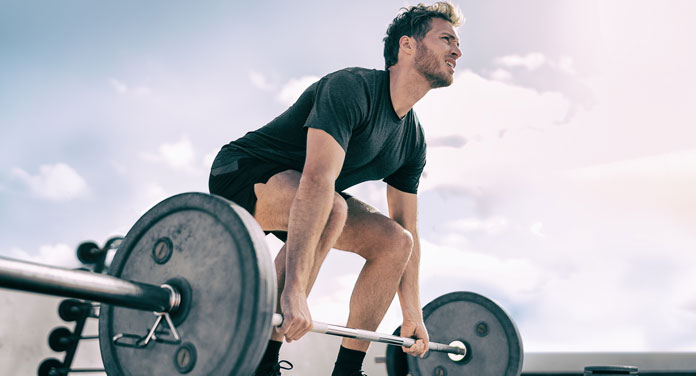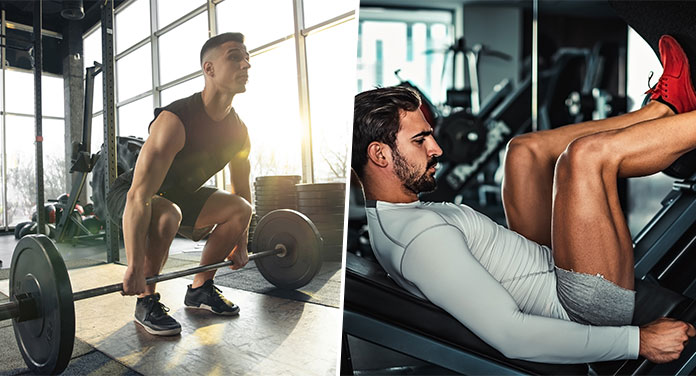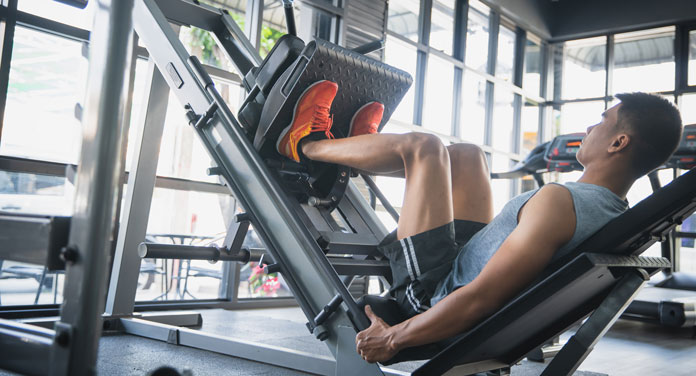Training The Lower Back ❚█══█❚ The lower back is often underestimated as a muscle part. After all, the front, i.e. the six-pack is much more important many think that. However, this underestimation harbors an immense risk of injury: the lower back is the main stabilizer of the upper body, along with the abdominal muscles.
If you ignore this part of the muscle, it can quickly lead to really painful injuries. So you should definitely train your lower back to prevent injuries and increase your general upper limit.
That’s why we have seven effective exercises here to train the lower back in a targeted manner and a number of typical mistakes that people like to make when doing this.
Why Should You Train Your Lower Back?
Sitting a lot and years of insufficient exercise causes this important part of the musculature to atrophy in most people. But if you then want to change your life and really want to start with sport, you should start with the weak points.
The lower back is also the number 1 source of back pain, various back problems, and postural disorders. Probably the most well-known problem that can arise from atrophied muscles in the lower back is a hollow back. Depending on the severity, this may not seem bad, but it definitely is. Because here various muscles are out of balance and the wrong muscles have to do the work of the atrophied back muscles in addition.
This can lead to injuries to the musculoskeletal system, some of which take years to really heal, but some of which can actually no longer be repaired. So: Better train and build up your lower back properly so that you can enjoy full freedom of movement of your body for a long time and without pain!
6 Exercises To Train The Lower Back
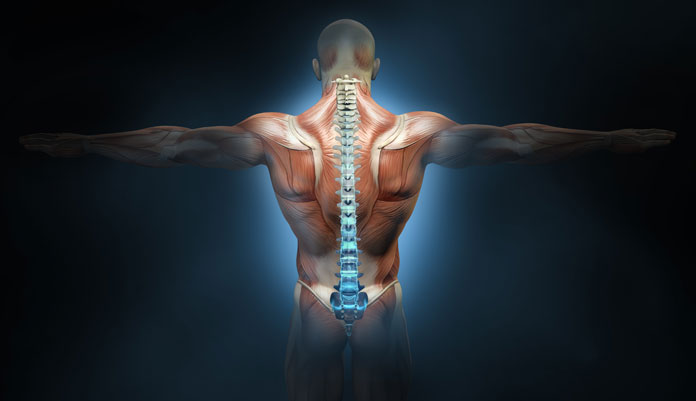
Wall Dead Bug Exercise
The dead bug on the wall is a great exercise for all lower back training beginners because it works purely with your own weight and specifically addresses and strengthens the lower back. You can do them anywhere there is a clear wall.
Execution:
To do this, lie on your back with your head about 30-20 cm away from the wall. You stretch your hands straight up. Then angle them so your palms are touching the wall. Now you lift one leg and bend it. You pull it in across your chest and then straighten it out again.
Breathing is important here. Exhale as you pull your leg in and inhale as you straighten it, keeping your lower back flat on the floor. Do the exercise slowly, always alternating your legs. Bend your right leg first, then your left, then you’re right again, then you’ve left again. Try to do 25 repetitions per side. You will quickly notice how intense the exercise is on your lower back. If the exercise feels more in your abdomen, then you may be breathing incorrectly.
SuperMan Exercise
Superman flies through the air. Do you have a picture in mind? Very well! This exercise is great for significantly improving your overall body tension. It also goes straight to your lower back.
That’s how it’s done:
To perform this, lie on your stomach on the floor. Now think of Superman, lift your chest, reach out your hands in front of you and lift them up, also your legs behind you, so that only your stomach and pelvis are touching the floor. Hold this pose briefly, then lie flat again. Then flex and repeat, trying to get 10 reps per set.
But make sure that your hips are always on the ground, especially if you have a hollow back.
Deadlift With Dumbbells
Caution is advised here: If you have a hollow back, then you should definitely consult a trainer before you dare to deadlift with heavyweights. Posture is extremely important with this exercise and you may be overworking the wrong muscles. In general, though, deadlifts are the perfect compound exercise for your lower back and leg muscles. The abdomen is also claimed.
For execution:
Stand up straight and shoulder-width apart, holding a dumbbell on the left and right with a very low weight at first. Proper form is always more important than the number of weight! Now you bend your knees very slightly, the dumbbells move in front of your body and you rotate them so that they are like one long dumbbell in front of you.
Don’t lower the dumbbells too low, for now, it’s enough if they pass your knee. Then you go back up. Keep your abs engaged as you do this exercise, you should be lifting out of your legs. In the standing pose, your hips are pushing forward, your butt is tight.
Feel free to use a mirror for this. You shouldn’t hunchback while doing this. If you do it anyway, then it is best to get the right advice from a trainer and show you the exercise again. Alternatively, trainers know many more exercises that train the lower back.
Deadlift With Barbell
Here you can increase your weight infinitely and build an extremely strong lower back, but the risk of injury is also highest.
Proper execution is therefore the be-all and end-all. Even if you are already working with heavyweights, you should do regular form checks to monitor your own execution.
The right execution:
The barbell is on the floor in front of you, you stand shoulder-width apart and bend your knees. Your back is straight, nothing is rounded in this position. You grip the dumbbell so that your hands are just outside your legs, slightly wider than you are standing. Then you go up, push yourself out of your legs, your back should stay straight here and not arch. When you reach the top, push your hips forward and tighten your buttocks.
Now go back down, but not all the way, about mid-calf, and from there push back up. Try to get 3 sets of 10 reps of each weight in perfect form before increasing the weight.
Hip Thrusts
Hip thrusts can also train the lower back. Not per se, but they train the neighboring muscle, the largest and strongest in the human body, the buttocks. This is indispensable for a strong lower back.
You can perform hip thrusts with the additional weight, such as a barbell or a loose weight plate, or you can do them with just your own body weight. You will need an upholstered bench or a sofa at home.
Execution:
Sit on the floor in front of the bench. Then move your upper back up slightly so that it rests on the bench below the shoulders or on the edge of the bench. Then push your butt up and tighten your buttocks so that your body forms a straight line from chest to knee joints. Your head is bent and fixed to a spot on the ceiling, you can hold your arms in front of your chest.
Then relax your pelvis and lower it slightly to repeat the exercise several times.
You can place a dumbbell or other weight on your pelvis, so your muscles have to work even more.
One-Leg Deadlifts
You should do this exercise with a light additional weight. It works optimally on the buttocks and lower back and trains the entire rear leg area.
Execution:
Stand up straight, holding a lightweight in your left hand at first.
The movement is flowing, at the same time your right leg lifts and stretches backward and your upper body bends forward until your leg is halfway straight back and your upper body is leaning forward.
Your hands are both hanging down, the left one holding the weight, the knee of the standing foot is slightly bent to help you keep your balance. Then you go back to the starting position, your leg slowly swings back, as does your upper body. Do 10 reps on each side, alternating sides regularly.
Stretches That Work The Lower Back
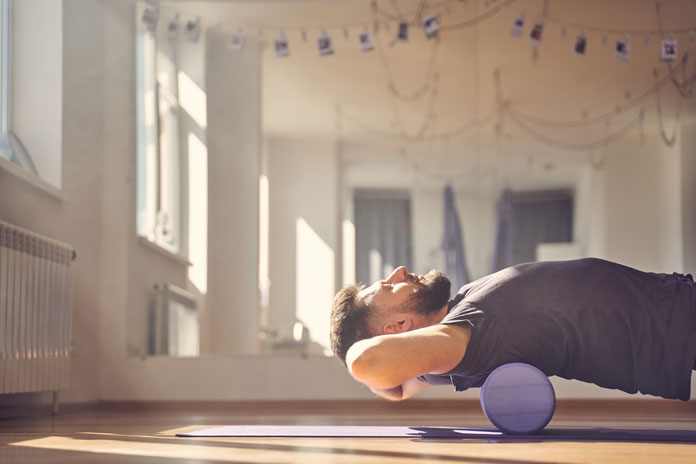
A strong lower back is also flexible, so it can accommodate unfamiliar movements without injuring yourself.
- The top exercise to stretch your lower back is really cozy and easy:
Lie on your back on the floor and spread your arms to your sides like Jesus. - Turn your head to the left and fix your left palm as it lies there.
- You now bend your left leg and place it over your right leg, your hips rotate with it. Use your right hand to hold your left knee in place. If you press it towards the floor, you can intensify the stretch. Your gaze stays on your outstretched left hand.
Stretch like this twice per side and your back will thank you!
Common Mistakes When Training Your Lower Back
Ignoring Hollow Back
A hollow back occurs because muscles are out of balance. Most of the time, the erector spine is overworked, and the lower back, abs, and butt muscles are atrophy.
In such a case, it would not be right to focus totally on the lower back, because this muscle cannot be addressed with most exercises due to the imbalance – the back extensors take over its function.
So you should first focus on training and strengthening your abs (particularly your lower abs) and butt, while regularly stretching your lower back and quads. This form of imbalance is also often associated with quadriceps tension (thigh muscle in front) or shortening, which is one reason for the pelvis being pulled backward. The pelvis has to come forward, so mobilization training for the pelvis makes sense.
It only makes sense to train the lower back once these muscles have all been strengthened or relaxed. This correction is annoying and time-consuming, but in the long run, it will give you a much better posture and a pain-free, strong back.
Arch Your Lower Back
Another common mistake is doing stretching exercises that involve bending backward. Most of these exercises are actually made possible by stretching the upper back, but you should never deliberately cause a strong hollow back!
Unfortunately, many do it, for example when bench pressing. Sooner or later, this can lead to massive injuries.
Cat Hump Deadlift
When you deadlift with a rounded back, you risk all of your mobility for a few numbers on the bar. Such a posture combined with a lot of weight is massively damaging for the entire back area. From strains to herniated discs, the consequences are open.
Use Blackroll On The Lower Back
Anyone who does this is consciously going into a strong hollow back. In the worst case, muscles can even tear off. So please don’t do it!

